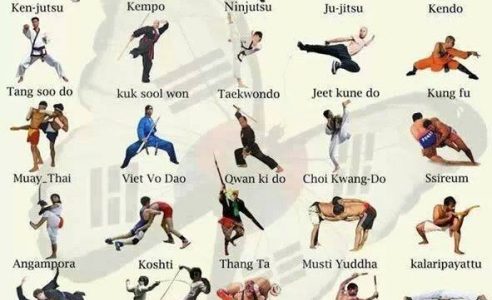Exploring The Rich Heritage And Spiritual Dimensions Of Martial Arts
Exploring The Rich Heritage And Spiritual Dimensions Of Martial Arts
Blog Article
Content Develop By-Gentry Henson
Step into the old world where martial arts were substantiated of necessity in varied regions. Societies crafted special battling styles linked with historic contexts. Strategies evolved over centuries with dedicated technique and cultural exchanges. Today, contemporary martial arts blend standard components for optimal effectiveness. Philosophically, martial arts highlight technique, self-improvement, and consistency. Respect, humbleness, and equilibrium are foundational principles directing specialists towards growth and resilience. Explore https://www.katymagazineonline.com/post/katy-summer-camp-guide-2023 of this abundant background and viewpoint to discover the extensive influences forming this long-lasting discipline.
Beginnings of Fighting Style
Martial arts originated in numerous areas all over the world, progressing as useful fight systems to defend against dangers. These old battling designs were created out of necessity, with each culture crafting strategies fit to their one-of-a-kind environments and obstacles. From the grappling arts of Jujutsu in Japan to the striking strategies of Kung Fu in China, martial arts were deeply linked with the historic, social, and cultural fabric of their particular cultures.
In Japan, the samurai class refined martial arts like Kenjutsu, the art of the sword, which later progressed into the more promoted form of Kendo. At the same time, in Brazil, Capoeira became a mix of dance and fight, created by enslaved Africans as a method to withstand oppression. Each martial art brings with it a rich history and viewpoint, mirroring the values and beliefs of individuals that exercised them.
As you delve into the beginnings of martial arts, you discover a tapestry of human resourcefulness, durability, and the stubborn spirit of warriors throughout time.
Evolution of Strategies
Via centuries of method and refinement, battle methods within numerous martial arts have undertaken a profound development. From ancient designs like Martial art and Martial arts to much more modern disciplines such as Brazilian Jiu-Jitsu and Krav Maga, the evolution of strategies has actually been driven by a combination of cultural impacts, useful applications, and technological innovations.
One substantial facet of this development is the cross-pollination of methods in between different martial arts. As an example, strategies from conventional Japanese Jiu-Jitsu were integrated right into the production of Judo by Jigoro Kano in the late 19th century. This mixing of styles has caused the advancement of hybrid martial arts like Mixed Martial Arts (MIXED MARTIAL ARTS), which combine elements of striking, grappling, and entry strategies.
Furthermore, the development of techniques has actually been shaped by the raising emphasis on efficiency and efficiency in combat. Experts have actually constantly sought to refine their methods via rigorous training, experimentation, and competition, bring about the growth of extremely specialized and efficient fighting styles. Overall, the evolution of strategies in martial arts shows the vibrant nature of battle and the ongoing quest for renovation and technology.
Thoughtful Structures
Checking out the underlying thoughtful concepts of martial arts provides insight right into their core worths and assisting ideas. At the heart of several martial arts self-controls is the concept of technique itself. By educating https://lukaseowwf.targetblogs.com/31654987/initiate-your-journey-determine-the-fighting-style-type-that-lines-up-with-your-goals and mind to serve as one cohesive unit, you grow technique that extends past the dojo or fitness center right into everyday life. This discipline incorporates respect, humility, and self-constraint, shaping not just your physical capabilities however additionally your personality.
An additional fundamental thoughtful structure in martial arts is the idea of constant self-improvement. The journey of mastering a fighting style is continuous, with practitioners constantly striving to better themselves, both physically and emotionally. This focus on growth cultivates resilience, perseverance, and a growth attitude that can be applied to all facets of life.
Additionally, martial arts highlight the value of consistency and balance. Methods are developed to make use of a challenger's power against them, highlighting the principle of generating and rerouting pressure as opposed to fulfilling it head-on. This approach encompasses interpersonal relationships, advertising serene resolutions and good understanding. By accepting these philosophical foundations, martial musicians not just boost their battle skills but also cultivate a way of living fixated individual development, regard, and harmony.
Conclusion
Finally, the background and approach of martial arts supply an abundant tapestry of custom, self-control, and self-improvement.
Take for example the story of Bruce Lee, that transformed martial arts by mixing various styles and approaches to produce his own distinct kind of Jeet Kune Do.
Through dedication and development, martial artists continue to push borders and influence others to reach their full possibility both in battle and in life.
